Travelling in Bhutan – Experiences to Cherish
Ever since I visited Bhutan for the first time in the summer of 2012, I have always looked forward to going back. I returned again in September ’12 and am looking forward to another visit in October 2013. There is a certain charm about Bhutan that makes me look forward to these trips. The country’s lush green Himalayan slopes, its high mountains, predominantly rural and agrarian population, a very laid back and careless nature of its people and an endearing Buddhist tradition and culture have filled my senses and have never failed to bring me peace from within. Here is a quick look at places and experiences that I look forward to, during my trips to Bhutan.
Hiking Paro Taktsang (Tiger’s Nest Monastery), Paro Valley
Let’s begin with the most well-known and most-visited place in Bhutan. Despite the effort of climbing, Paro Taktsang is visited by almost every person who makes it to Bhutan. The monastery is known for its magnificent setting, located half-way down a vertical cliff at an altitude of 10,000 feet. It is also one of the most sacred Buddhist sites of pilgrimage in the country. Legend has it that Guru Padmasambhava, wh0 brought Buddhism to Bhutan, flew here on the back of a tiger and meditated for many months. A temple was first built here in the 17th century, but the current building is as recent as 1998, rebuilt after a fire destroyed the older structure.
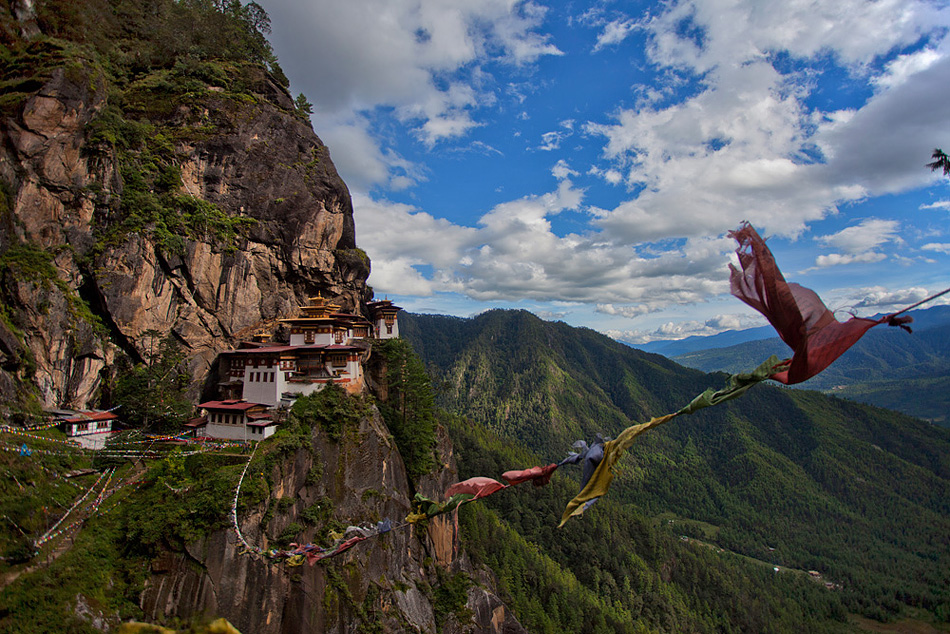
It takes a climb of three to four hours to reach the monastery through a thick coniferous forest on a well-defined path tread by tourists as well as many locals on a pilgrimage. Rhododendrons and pine trees keep your company all through the climb. Somewhere half-way up on the way is a restaurant run by Bhutan Tourism, which offers tea and snacks through the day and a buffet lunch during the afternoon hours. The strategically located restaurant also offers excellent views of the monastery. The steep climb, especially after a heavy lunch, can be very tiring. No wonder it’s a cliche among travel writers that it would be easier to fly there on a tiger.
A life dedicated to Buddha in Kyichu (Kichu) Lhakhang, Paro Valley
Kyichu (Kichu) Lhakhang is one of the oldest Buddhist Temples in the country and a place believed to have been visited to Guru Padmasambhava. An ancient cypress tree in the temple premise is known to have sprouted from the Guru’s walking stick.
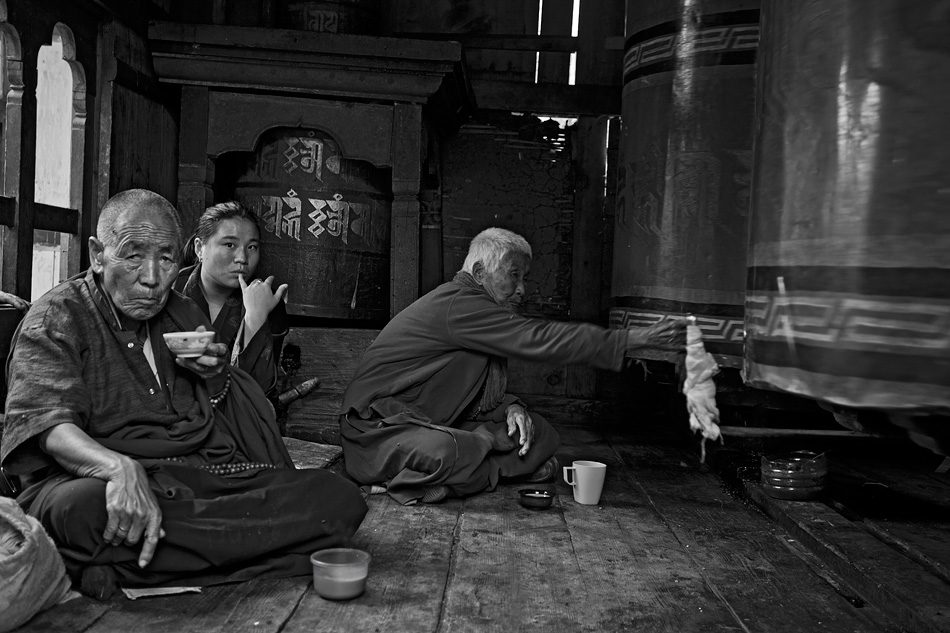
The best thing about the temple is its people – visitors and residents. Mornings are a time when a score of little lamas in ochre robes gather in the temple to chant and learn from their teacher. While the boys chant in a high pitched chorus inside, a small bunch of old men and women sit outside and religiously turn prayer wheels or shifting prayer beads. In Bhutan, it is a tradition to retire from everyday life after a certain age and spend rest of the life wearing a monk’s robe in a spiritual quest. A small group of elderly men and women usually congregate in the temple every day, spending their time turning the prayer wheels. Visitors keep dropping in regularly, circumambulating the temple and rotating the long line of prayer wheels on the wall.
Landing at Paro Airport (and watching the flights take off)
The best views of Paro Valley are from a flight. I am told that you can also get excellent views of Jhomalhari Peak from the aircraft, but the weather was never clear enough during all my landings and take-offs so far. Hopefully things will turn out in my favour during the next visit. The aircraft swoops down very close to the hills of Paro before landing. The pilot aligns the plane along the valley and flies very low, between the mountains and just above the Paro River before landing. You feel as if you can reach your hands out of the window and pick a few twigs from the nearest pine tree. Apparently it is one of the scariest landings in the world, but I found it more appealing than frightening. Perhaps the pilots are trained well enough to make the landing seem smooth to the passengers sitting inside.
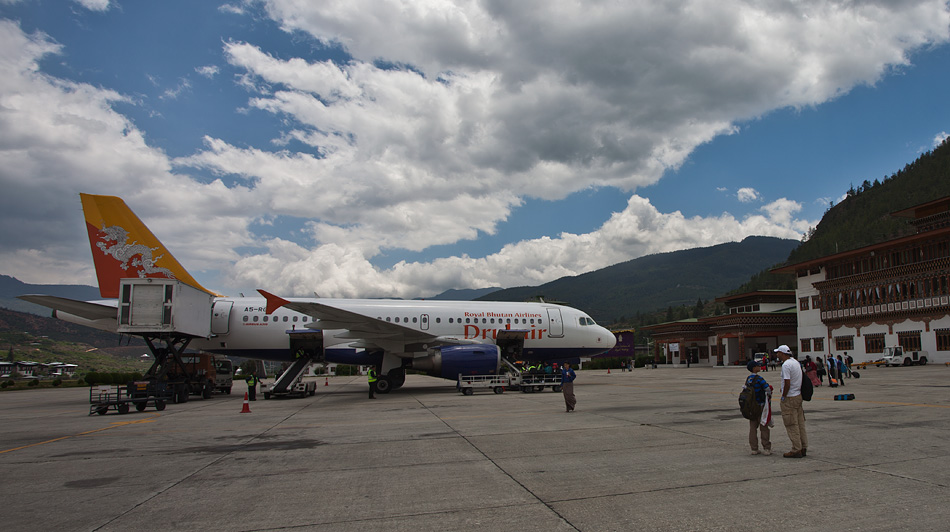
During take-offs, flights make a steep ascent to get above the mountains as soon as possible. Its a pleasure to watch the entire vista of the airport and the flight taking off right next to you, standing on the hills on the right bank of Paro River. If you are out buying something at the weekend market in Paro during a takeoff, you will hear a deafening sound of the aircraft taking off right over your head.
Traffic Square (without any significant traffic) and a walk in Norzin Lam, Thimphu
It may seem odd to you, but policemen managing the traffic at a junction in Norzin Lam are now one of the prime attractions for visitors in Thimphu. They direct the (very disciplined) traffic by continuously moving both hands back and forth, which almost looks like a dancing ritual without moving the feet. The government tried to replace them with traffic lights. But people did not like the automated system and the men had to be brought back to duty. Incidentally, this is the only junction in the entire country that requires traffic management. The red-yellow-green lights that we are so familiar with in our cities is simply non-existent in Bhutan. Watch the video below.
Norzim Lam is the main-street where most of Thimphu’s shops are located. A walk on the kilometer-long road should give you a glimpse of the most (and only) urbanized area in all of Bhutan.
Vibrant Colours of Thimphu Market
If you have visited Paro before arriving at Thimphu, you may now be familiar with many artifacts associated with religious life in Bhutan. Such as the prayer wheels and Varjra (dorje). You may not be the only visitor who thought it would be nice to take one of those things back home. But where would one find these things for sale? The answer is in Thimphu’s Market, located on the other side of Wangchuk River. It is a colourful market divided into two sections – one with vendors selling clothes and the other area where you will find a large number of old and traditional stuff to buy, prayer wheels and Vajra including.
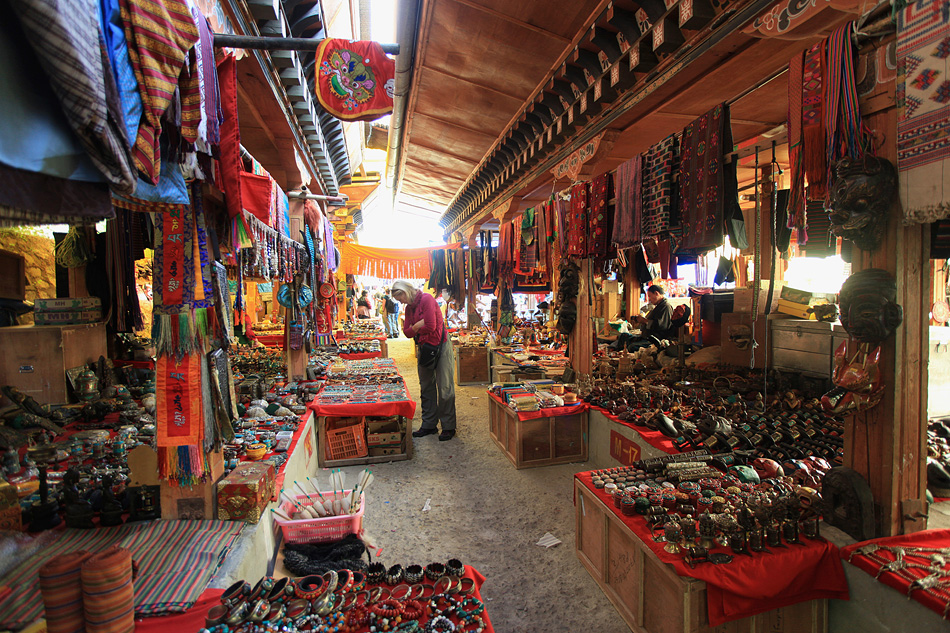
Access to the market is through a covered wooden bridge decorated with lot of colourful prayer flags on its railings.
Sunrise from Dochula Pass & Druk Wangyal Chortens
It takes some determination to wake up in the small hours of the day and make the hour-long drive from Thimphu to Dochu-la, a pass 10,000 feet high located between Thumphu and Punakha districts (dzonkhags). But watching the sunrise from up there, you will not regret having to leave your bed too early. The sunrise vista is magnificent, no matter how the weather is. On a clear day, you can see the sun rising over a long range of snow-peaks on the horizon and lighting up the green expanse of undulating landscape in front of you that stretches as far as you can see. The mountains in the view include Gangkhar Puensum–Bhutan’s tallest peak–and Zongphu Gang (Table Mountain) with its curiously flat peak. Even if you end up with a weather that is cloudy or foggy, the vista of nearby mountains forming a series of wavy ridges topped by cedar trees lit by the soft light of the early morning is something you will cherish.
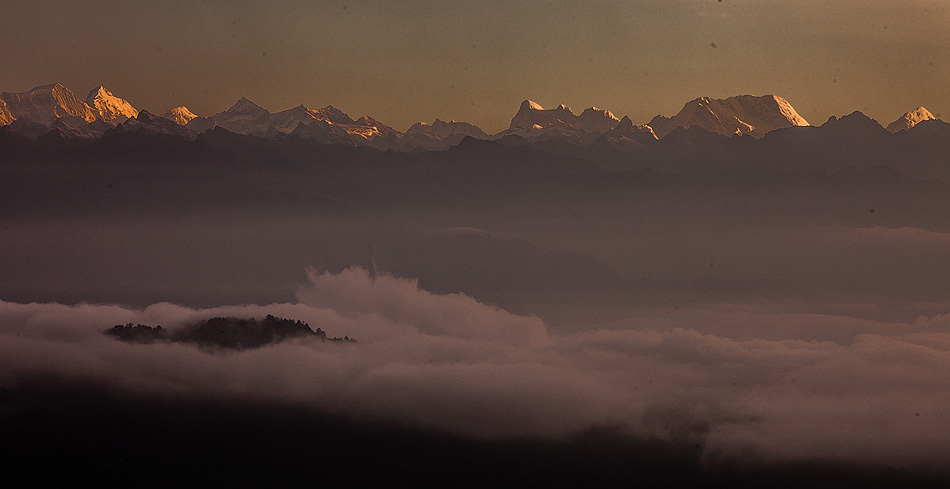
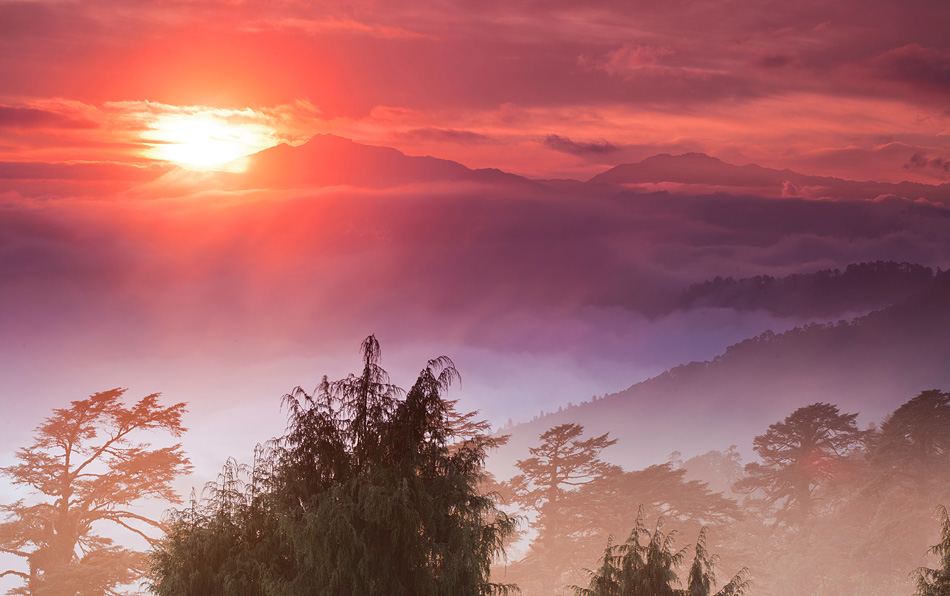
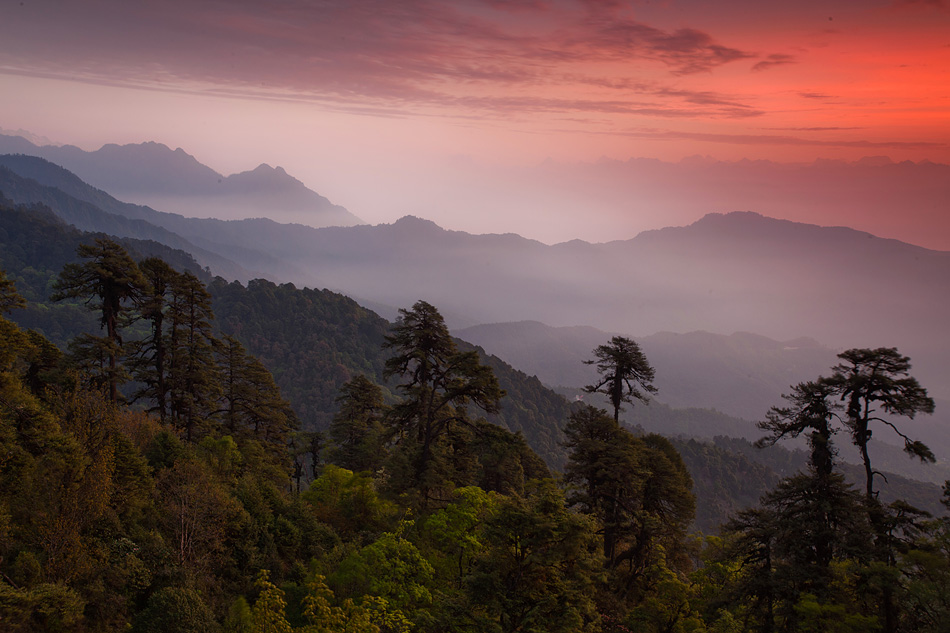
Dochula is special, also because of Druk Wangyal Chortens (also called 108 chortens) – a recent addition to the landscape of the pass. It’s a beautiful assembly of a large number of chortens on a hillock at the pass.
Young Monks Playing Chimi Lhakhnag (fertility temple)
Allow me a freedom of some unrelated rant before I say more about Chimi Lhakhang. In Bhutan, and in many other places as well, it seems to be a common practice to use tourist-friendly name to replace a native name. It is a practice that upsets me, but a lot of people seem to understand only the anglicized name, which forces me to use them at least in brackets. Even in this short essay, it is already the fourth time that I had to use a foreign name for a place that truly reflects the local culture. Allow me to make an appeal to you to use local names as much as possible. The original names feel lot more authentic and belonging to the local culture than a set of translated English words.
Let’s get back to Chimi Lhakhang. It is a great pleasure to watch endearing little monks at work or play in the evening hours at the temple. On my first visit, I watched them chasing each other as they played football, often falling over each other as they run through the grass-laden field. The players often got distracted from running behind the ball and indulged in play-fights with other players, while another player happily scored a goal. The second time, I watched a small pack of them struggling to fill red chillies into a sack. They took their own sweet time working at it, occasionally managing to fill a handful of chillies in the middle of some play, some arguments and many other things that momentarily grabbed their attention. Working or playing in their ochre robes, they look adorable and comical at the same time. This is easily my most cherished experience in Bhutan.
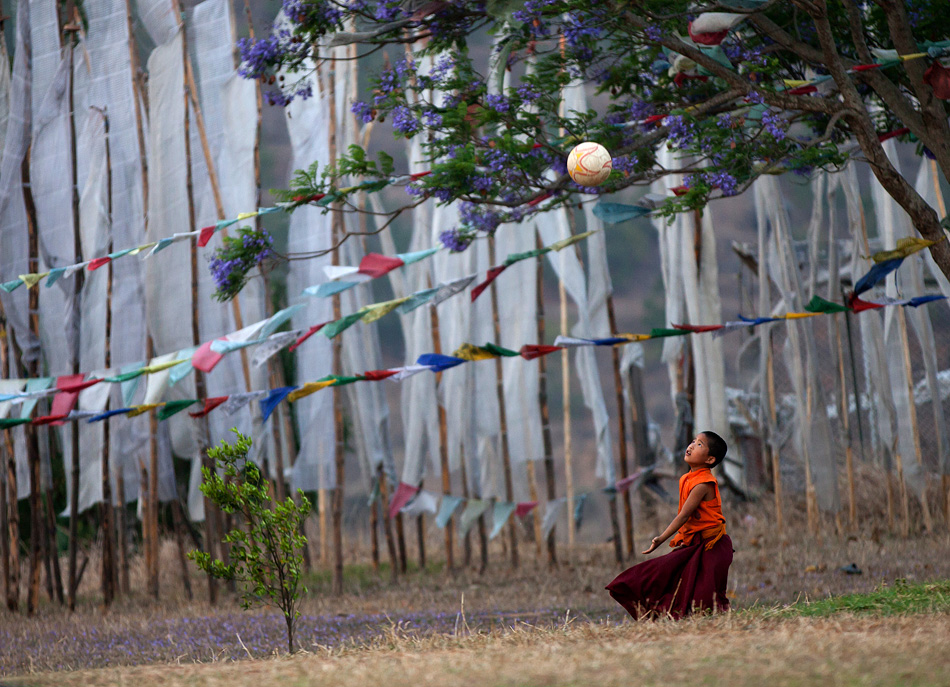
Legend, as there is always a legend behind everything in Bhutan, says that lama Drukpa Kinley killed a demon at Dochula and buried here at Chimi Lhakhang. A small chorten (stupa) painted in black stands on the temple enclosure, indicating the place where the demon is said to be resting in peace. Durkpa Kinley is the most loved and most venerated monk in Punakha region. There are stories abound on how he taught the true spirit of Buddhism, not through serious lectures and preaching, but through his strange womanizing and drinking habits and contesting his opponents with true words of wisdom that scaled beyond dry theories and ritualistic practices.
The magnificent Punakha Dzong in evening light
Dzongs are fortresses located all over Bhutan. They once served as protection from invading armies. Now, each dzonkhag (district) in the country has a dzong that serves as the center of political and religious administration. Many of the dzongs are towering and dominating structures, often located strategically next to a river or overlooking a cliff.
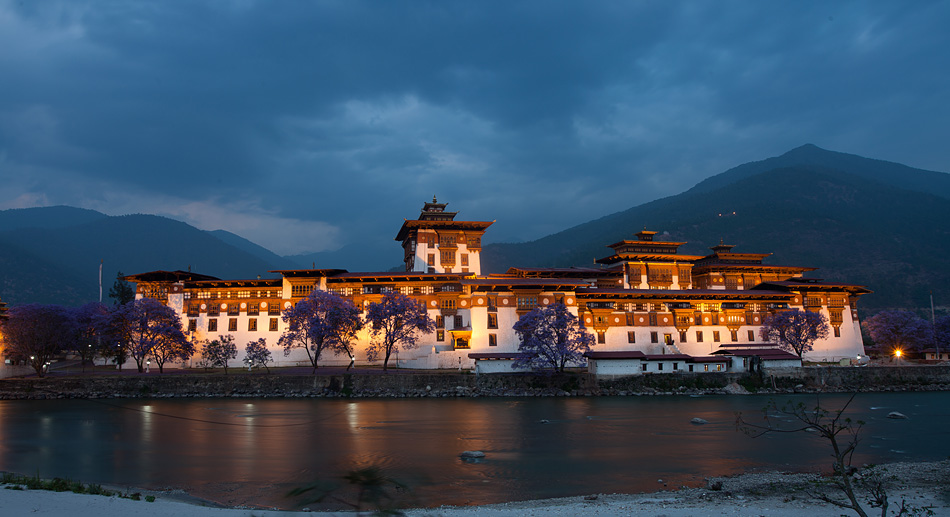
Punakha Dzong scores a notch above every other dzongs in its beauty, grandness as well as its location. Situated at the confluence of Mo Chu and Po Chu Rivers and overlooking beautiful hills, the dzong gets prettier with a decoration of purple jacaranda flowers when the trees bloom in summer. It is an incredible sight, watching the dzong glow in the evening light, flanked by Mo Chu River and the mountains behind it.
Hike to Petsheling Goemba, Bumthang Valley
Hiking up the hill behind Swiss Guest House in Jakar will take you through one of the finest forest trails in Bhutan to Petsheling Goemba. The path goes through a quiet pine forest occasionally interrupted with patches of open grasslands. If you are hiking in summer, the path is littered with tiny white flowers in the lower altitudes, carpet of purple flowers higher up and a bloom of rhododendrons on the approach to the monastery. Just below the Goemba is a small hamlet that gives you a glimpse of life in Bhutan away from the arterial roads. The monastery itself is a quiet place where friendly monks always have the time to chat with visitors.
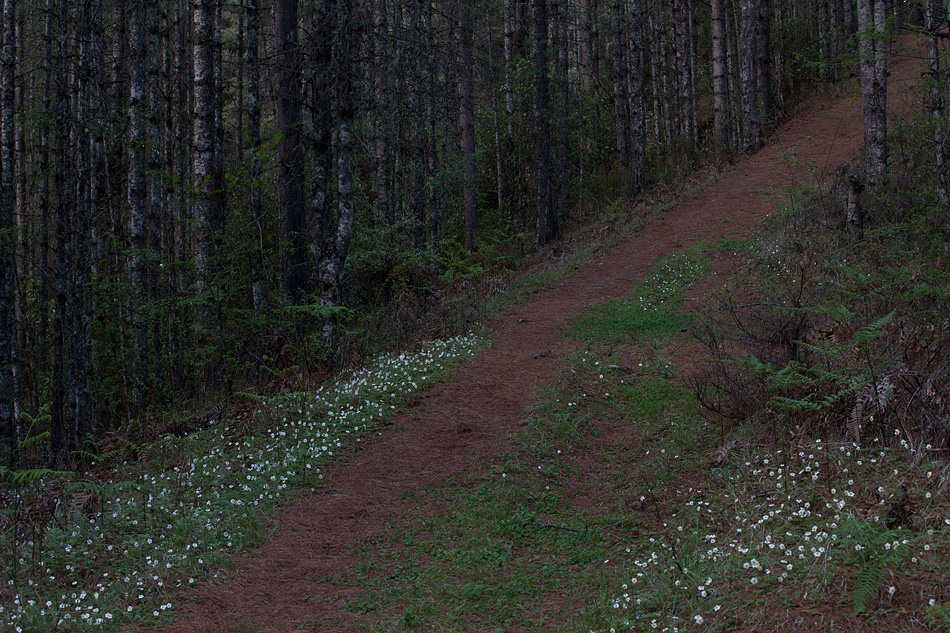
Recently built roads have eliminated the need for the hiking path, which means you can have the path all for yourself without encountering anyone all along the way.